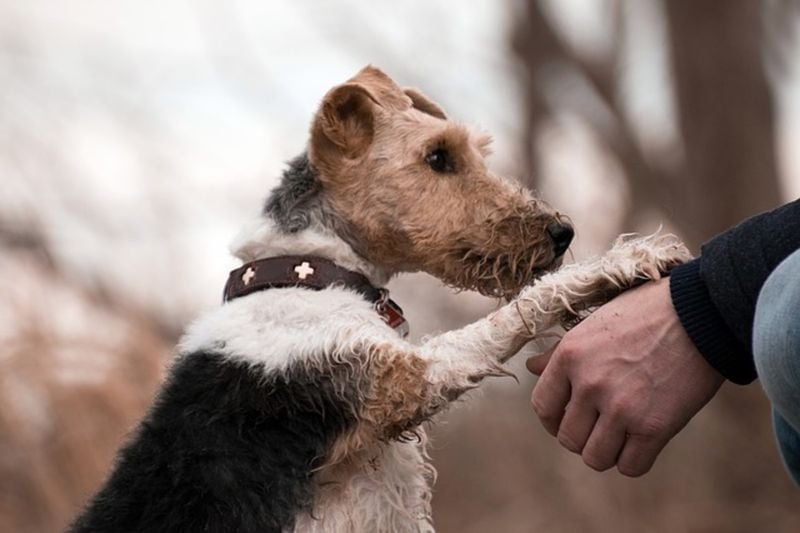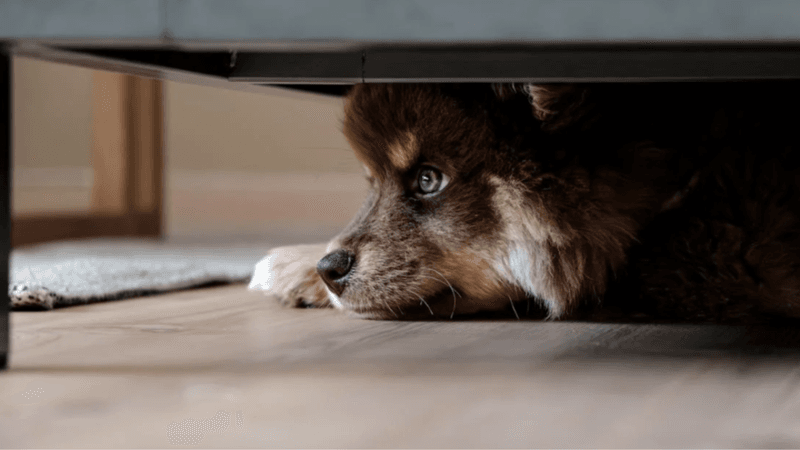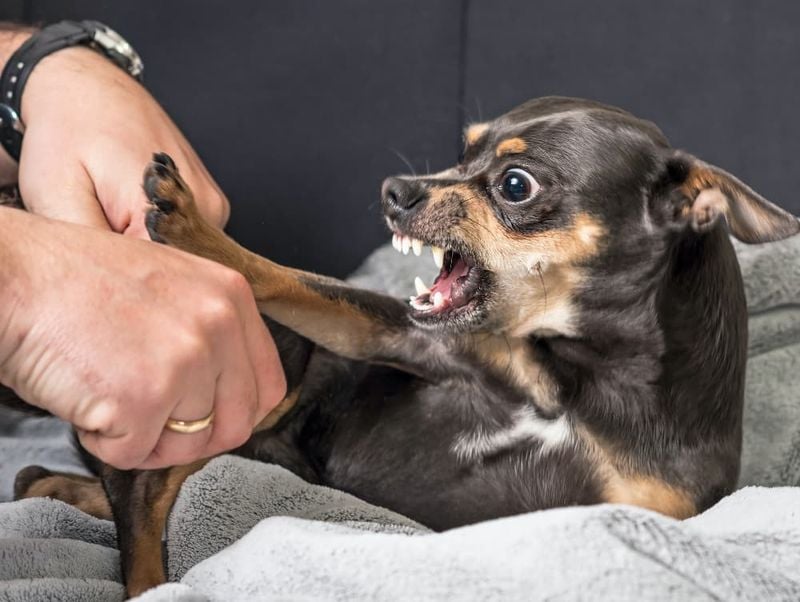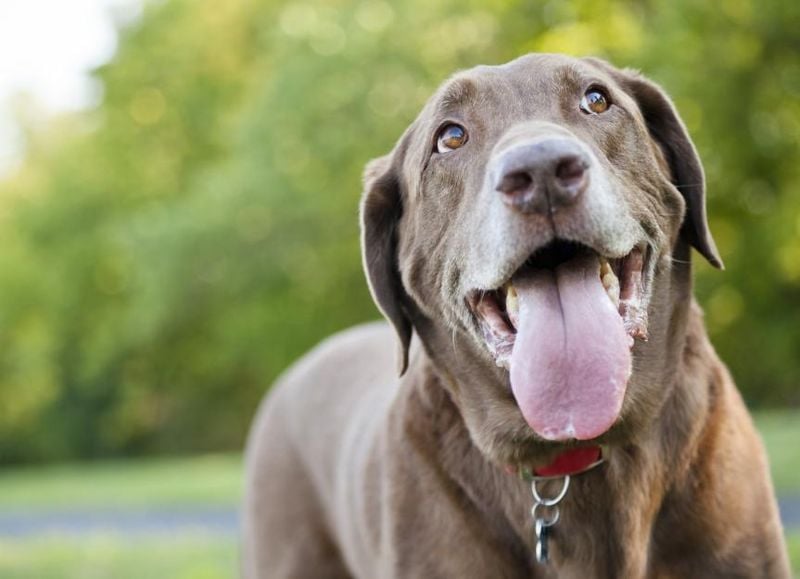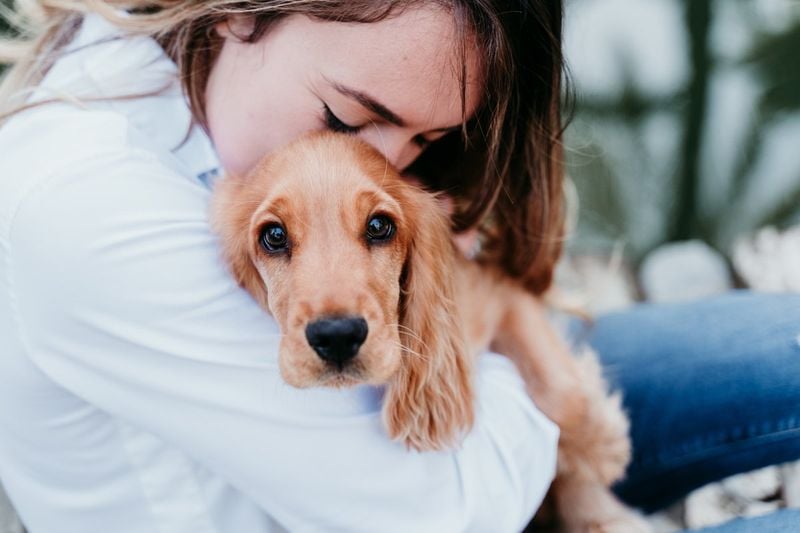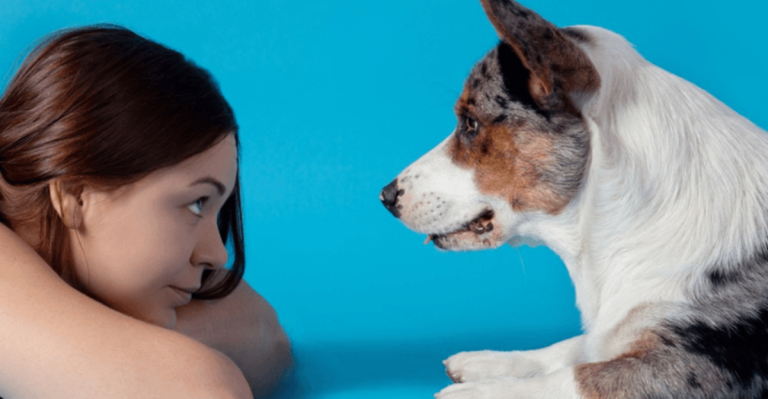16 Ways Your Dog May Be Asking for Help
They don’t speak our language, but they’re always trying to tell us something. From a paw on your lap to a sudden whimper in the night, your dog has a secret vocabulary built on body language, behavior, and gut instinct.
The trouble is, many of us miss the signs until it’s too late. Dogs are incredibly intuitive creatures—they feel joy, fear, pain, and confusion, just like we do.
But when something’s wrong, they don’t come out and say it. Instead, they give us subtle, and sometimes not-so-subtle, clues that they need help.
Maybe they’re limping ever so slightly. Or hiding under the bed when they used to be glued to your side. Or they’ve suddenly become clingy, staring at you with those big, expressive eyes like they’re trying to say, “Please notice me.”
As dog parents, it’s our job to tune in. To notice the change in rhythm, the odd behavior, the cry for help wrapped in fur and silence.
Because often, what looks like a quirk or a mood swing might actually be a signal that something’s off—physically or emotionally. This article explores the quiet ways your dog might be asking for help.
We’re talking real-life, everyday behaviors that too many people overlook. And no, it’s not about jumping to worst-case scenarios—it’s about being proactive, observant, and tuned into your best friend’s well-being.
So if you’ve ever looked at your pup and thought, “Are you okay?”, this one’s for you.
1. Excessive Licking or Chewing
Dogs often resort to licking or chewing themselves as a way to self-soothe. It might seem harmless, but this behavior can indicate anxiety, allergies, or even pain from an injury.
Observing your dog’s grooming habits can be crucial, as excessive licking might lead to hot spots or infections.
When you notice your dog focusing too much on a particular spot, it’s time to check for redness, swelling, or wounds. Consult with your vet if the behavior persists and seems compulsive.
Sometimes, simple environmental changes or a new diet can alleviate the issue.
Engaging your dog in play or providing chew toys might also help distract them from over-grooming. Ultimately, understanding this behavior is key to ensuring your dog’s well-being.
2. Sudden Changes in Appetite
A dog’s relationship with food can tell you a lot about their health. If your pup suddenly starts eating more or less than usual, it could be a sign of something amiss.
Overeating might suggest stress or an underlying medical condition, while a loss of appetite can indicate issues like dental pain or gastrointestinal problems.
Monitor your dog’s eating habits closely. If you notice changes, assess other behaviors to paint a complete picture of their health.
Sometimes, changes in appetite can be seasonal or related to exercise levels, but persistent shifts warrant a vet visit. Understanding your dog’s dietary needs and ensuring a balanced diet can promote a healthier, happier life.
Remember, their bowl isn’t just a meal; it’s a window into their well-being.
3. Whimpering or Unusual Vocalizations
Dogs that are usually quiet but begin to whimper or make unusual sounds might be trying to communicate discomfort. This vocalization can indicate pain, stress, or even fear. Pay close attention to the context in which these sounds occur.
A sudden increase in vocalizations might also relate to changes in their routine or environment. Understanding these cues requires observation and sometimes consultation with a vet or a dog behaviorist.
In some instances, providing comfort through touch or familiar objects can help ease their distress. But if the whimpering persists, it’s crucial to investigate further. Your dog’s voice is one of their most direct ways of reaching out for help.
4. Persistent Pawing at You
When your dog keeps pawing at you, it’s more than just seeking attention. This behavior can signal an urgent need for assistance, whether it’s physical discomfort or emotional distress.
Dogs use their paws as a way to communicate, and persistent tapping shouldn’t be dismissed lightly.
If your dog seems more pawsy than usual, consider what might be causing it—perhaps an injury, unease, or even hunger. Pay attention to other accompanying signals like whining or changes in energy levels.
Engaging with your dog through play or gentle petting might alleviate their concerns momentarily.
However, persistent behavior warrants a closer look to determine the underlying cause. Remember, their paws are not just for play; they can also be a plea for help.
5. Hiding or Isolating Themselves
When a sociable dog begins to hide or isolate itself, it’s often a red flag. This behavior can indicate fear, illness, or emotional distress. Dogs might retreat to quiet corners when they are physically or emotionally overwhelmed.
Notice where your dog is spending their time. If they’re choosing secluded spots over family gatherings, it might be time to investigate why. Often, this requires a gentle approach, reassuring them with your presence without forcing interaction.
A vet visit can rule out medical issues, while a behaviorist might help with emotional concerns.
Creating a safe and comforting space for your dog can also encourage them to reintegrate slowly. Isolation is more than just a phase; it’s a signal worth exploring.
6. Restlessness or Pacing
Restlessness in dogs often manifests as pacing or inability to settle down. While this behavior can be a normal response to excitement or energy, persistent restlessness might hint at discomfort or anxiety.
Whether it’s physical pain or emotional worry, your dog’s inability to relax could be telling you something.
Take note of when and where this behavior occurs. Is there a specific trigger, like loud noises or changes in routine? Identifying patterns can help you address the root cause.
Sometimes, additional exercise or mental stimulation can alleviate restlessness.
However, if the behavior persists, consulting a vet or behaviorist is wise. Providing a calm environment might help ease their mind. Pay attention, as their pacing may be a call for help.
7. Unusual Aggression or Irritability
Aggression in a dog that’s typically calm and friendly can be unsettling. This sudden behavioral shift often signals underlying issues such as pain, illness, or fear. It’s crucial to observe the context and triggers of this aggression.
Consider recent changes in your dog’s environment or health. Sometimes, even minor injuries or stressors can lead to significant behavioral changes.
Addressing unusual aggression involves patience and understanding. It’s essential to ensure a safe environment for both your dog and others around them.
Consulting with a vet or a professional trainer might provide insights into managing and relieving their aggression. Remember, aggression is usually a symptom rather than a standalone issue.
8. Changes in Bathroom Habits
Bathroom habits provide crucial insights into a dog’s health. A house-trained dog suddenly having accidents or frequently needing to go out might be signaling a problem.
This change can stem from urinary tract infections, digestive issues, or even stress.
Monitoring your dog’s bathroom behavior can help identify patterns. Are they drinking more water, or have there been changes in their diet? Environmental stressors can also play a role.
If accidents become frequent, a vet visit is necessary to rule out medical problems. Addressing the issue early can prevent discomfort and complications for your dog.
Understanding their needs involves more than training; it’s about tuning into their signals.
9. Staring at You Intently
When a dog locks eyes with you, it’s not just a loving gaze. This intense stare can indicate they need something they can’t express. Whether it’s confusion, hunger, or distress, understanding this look is key.
Consider what your dog might be trying to tell you. Is it time for a walk, or are they feeling unwell? Sometimes, a stare is accompanied by other signals like whining or pawing.
Responding to this behavior involves observation and understanding. Providing comfort or addressing their needs can reassure them.
However, if the staring seems persistent and unexplained, consulting a vet might be wise. Your dog’s eyes are windows to their soul—and their needs.
10. Shivering or Trembling
Shivering in dogs isn’t always due to cold. Trembling can signal pain, fear, or even toxin ingestion. Observing the context of this behavior is crucial. Is your dog shaking after a stressful event or without any apparent reason?
Sometimes, shivering can be a response to excitement or anxiety, but persistent trembling warrants a closer look. Check for other symptoms like lethargy or vomiting, which might indicate a medical issue.
Providing comfort and ensuring a warm environment can help, but if the trembling continues, seek veterinary advice. Understanding your dog’s shivers involves discerning between harmless and serious causes.
It’s more than a quiver; it might be a call for help.
11. Avoiding Physical Contact
When a dog that loves cuddles starts avoiding contact, it’s concerning. This behavior can indicate injury or discomfort, possibly due to an internal issue. Avoidance might be their way of protecting a sore spot.
Observe your dog’s reactions to touch. Are they flinching or moving away from specific areas? Sometimes, subtle cues can reveal a lot about their health.
Addressing this behavior involves patience and gentle observation. If your dog continues to evade your touch, a vet visit is necessary. Understanding their hesitance is crucial in providing the care they need.
It’s not just about physical affection; it’s about ensuring their comfort and health.
12. Scratching or Rubbing Against Furniture
When dogs scratch or rub against furniture, it might seem playful, but it can signal discomfort. This behavior often points to skin irritation, allergies, or parasites. Observing the frequency and intensity of this action is essential.
Consider potential allergens in your dog’s environment, like dust or pollen. Regular grooming and checking for parasites can prevent excessive scratching.
If the behavior persists, consult with a vet to explore underlying causes. Sometimes, dietary changes or medication might be needed.
Understanding their need to scratch goes beyond the surface; it involves addressing potential health issues. Relief is more than a rub away; it’s a step towards comfort.
13. Panting When It’s Not Hot
Panting is normal for dogs, but when it happens without heat or exercise, it can indicate stress, overheating, or respiratory issues. Observing when this panting occurs can help identify the cause.
Consider recent activities or changes in your dog’s environment. Stressors like loud noises or new situations might lead to excessive panting.
Ensuring a calm and cool environment might help alleviate the behavior. However, persistent panting requires a vet’s attention to rule out health issues.
14. Changes in Eye Contact or Gaze
Dogs communicate a lot through their eyes. Changes in their gaze, such as unfocused or intense stares, might indicate neurological issues or pain. Observing these subtle shifts can provide insights into their health.
Consider other accompanying behaviors, like head tilting or changes in energy levels. These can help piece together the puzzle of their well-being.
Consulting a vet is crucial if you notice persistent changes. Early detection can prevent serious complications. Understanding their eyes goes beyond appearance; it’s about recognizing signs of discomfort or distress. Their gaze is a gateway to their health.
15. Refusal to Go for Walks
When a dog refuses a walk, it’s unusual and concerning. This behavior can signal sore joints, fear from a past trauma, or serious health issues. Observing their reluctance involves understanding recent changes in their life.
Consider environmental factors or previous negative experiences that might contribute to this behavior. Sometimes, even subtle changes at home can impact their willingness to venture out.
Engage them with gentle encouragement and observe for any signs of discomfort.
However, if refusal continues, a vet check-up is necessary. Understanding their walking hesitance is about more than exercise; it’s about addressing possible underlying issues.
16. Clinginess or Unusual Neediness
Dogs often seek comfort from their owners, but excessive clinginess can indicate insecurity or an underlying health issue. This behavior might stem from separation anxiety or the onset of an illness.
Observe when this neediness occurs. Is it after a change in routine or a stressful event? Understanding triggers can help address their concerns effectively.
Providing reassurance and maintaining a consistent routine can help ease their anxiety.
However, if their clinginess seems excessive, consult a vet to explore possible health concerns. Understanding their attachment is about more than affection; it’s about identifying cries for help.




